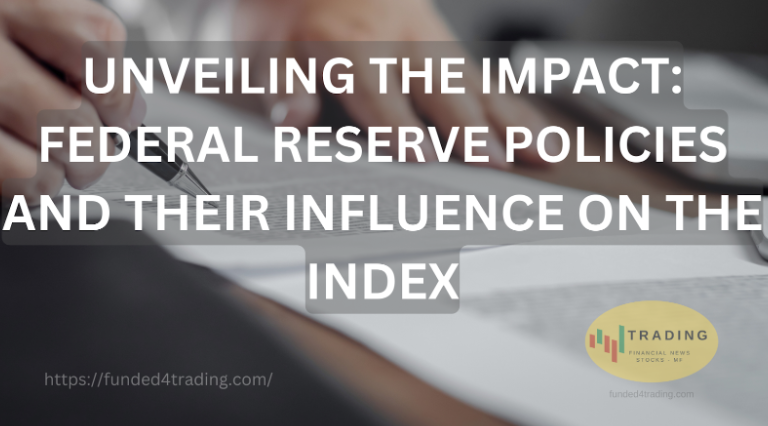Introduction:
In the complex tapestry of global financial markets, one of the most influential players is undoubtedly the Federal Reserve. Established in 1913, the Federal Reserve, often referred to as the Fed, plays a pivotal role in shaping the economic landscape of the United States. As investors and financial enthusiasts, it is crucial to understand how the policies of this institution can ripple through the stock market indices, impacting investment decisions and market dynamics.
Understanding the Federal Reserve:
Before delving into the influence of Federal Reserve policies on the index, let’s grasp the institution’s core functions. The Fed is tasked with maintaining stability in prices and employment, fostering economic growth, and, importantly, overseeing the nation’s monetary policy. Through its monetary policy tools, the Fed seeks to manage inflation, control interest rates, and navigate the overall economic health of the country.
Interest Rates and the Stock Market:
One of the primary channels through which the Federal Reserve affects the stock market is the manipulation of interest rates. The central bank adjusts the federal funds rate, which is the interest rate at which banks lend to each other overnight. This rate, in turn, influences the broader interest rate environment, impacting borrowing costs for businesses and consumers alike.
When the Fed lowers interest rates, borrowing becomes cheaper. This often leads to increased spending, investment, and, consequently, a boost to corporate earnings. As a result, stock prices tend to rise. Conversely, if the Fed decides to raise interest rates to curb inflation, borrowing becomes more expensive, potentially dampening economic activity and causing a decline in stock prices.
Quantitative Easing and its Ramifications:
In times of economic distress, the Federal Reserve may resort to unconventional measures, such as quantitative easing (QE). QE involves the central bank purchasing financial assets like government bonds and mortgage-backed securities to inject liquidity into the financial system. This influx of capital can have a profound impact on the stock market.
With increased liquidity, investors may find themselves with more capital to deploy, potentially driving up demand for stocks. Furthermore, QE tends to lower long-term interest rates, making equities more attractive compared to fixed-income securities. However, it’s essential to note that the effects of QE are not uniform, and market reactions can vary based on the economic context.
Forward Guidance and Market Expectations:
Apart from tangible policy actions, the Federal Reserve’s communication strategy also holds significant sway over market sentiment. Through press conferences, speeches, and policy statements, the Fed provides forward guidance on its intended course of action. Market participants keenly analyze these communications to gauge the central bank’s stance on interest rates and economic conditions.
The market’s reaction to forward guidance often transcends the actual policy changes. If the Fed signals a commitment to accommodative policies, investors may adjust their strategies accordingly, influencing buying or selling decisions and, consequently, impacting the overall index.
Conclusion:
In the intricate dance between monetary policy and financial markets, the Federal Reserve emerges as a key choreographer. Its decisions on interest rates, unconventional measures like quantitative easing, and the nuanced art of communication collectively shape the trajectory of stock market indices. As investors, understanding these dynamics is paramount for making informed decisions in a landscape where the ripples from the central bank’s actions are felt far and wide. Stay attuned to the Fed’s policies, for they are the silent orchestrators of the economic symphony we navigate every day.

